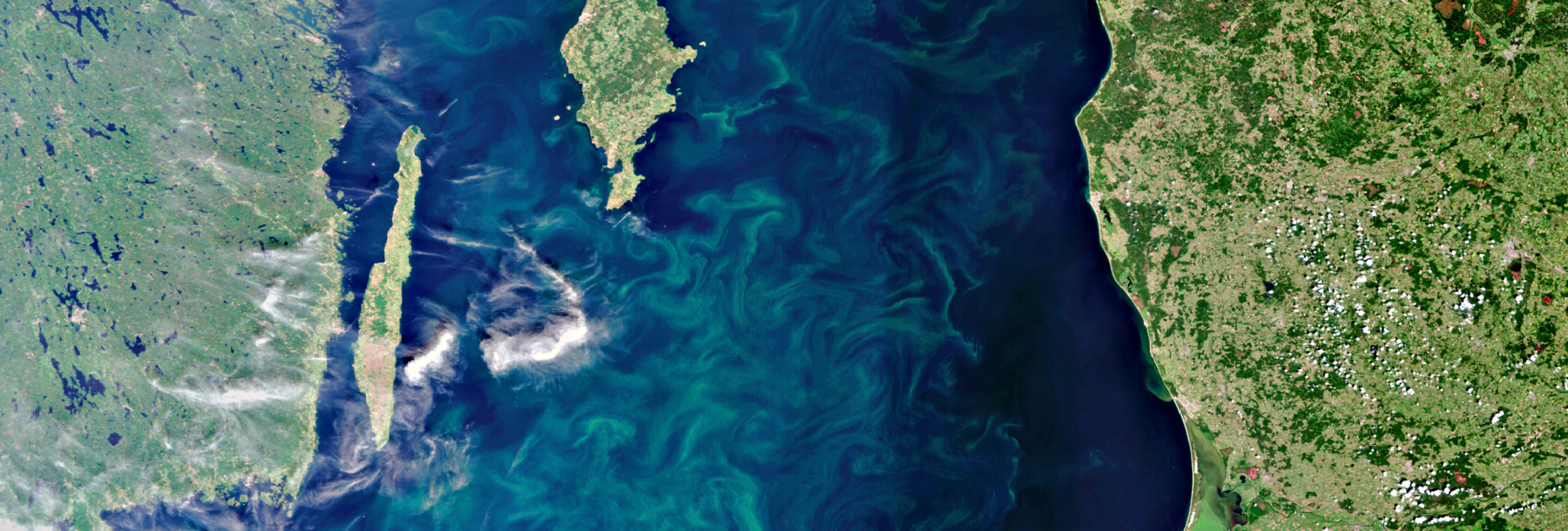Current pathways in the Baltic Sea
Currents stir up sediments from the seabed and transport them further on. Bottom trawling increases this transport by up to a third, as researchers from the Helmholtz-Zentrum Hereon have now shown in a new model study. This can reduce the Baltic Sea's function as a natural carbon sink and can have significant effects on the nutrient balance of coastal seas.
When particularly dense water flows over the seabed as a so-called bottom current, it leaves behind gutter-like contour lines and thus changes the shape of the seabed. In order to better understand these current paths, Dr Lucas Porz from the Institute of Coastal Systems - Analysis and Modeling at Helmholtz- Zentrum Hereon, together with project leader Dr Wenyan Zhang and Institute Director Prof. Corinna Schrum, studied two mud depocenters in the Baltic Sea. They compared various computer simulations with geological and oceanographic data. These confirmed that reliable predictions of the current paths in the Baltic Sea can be made and that past current patterns can also be explained. On this basis, the researchers then investigated the influence of bottom trawling on sediment distribution in the Baltic Sea.
"The novel aspect of our approach is that we include the actual bottom trawl activity of individual vessels in our simulations instead of only estimating the distribution of fishing fleets, as has been common in previous studies. Thus, we also take into account seasonal and weather-related fluctuations in fishing activity," explains Lucas Porz, lead author of the study.
The impacts of bottom trawling
The result: Bottom trawling is responsible for a 14 percent higher suspended sediment content and up to 30 percent higher suspended sediment transport in the Western Baltic Sea. These substances have been deposited as sediment layers on the seabed over decades and centuries. The bottom trawls stir up these layers and thus actively interfere with natural processes. In the long term, this could have consequences not only for the seabed, but also for the atmosphere. For the mud depocenters in particular are considered a major carbon sink.
As the simulations show, a large amount of silt is stirred up by the trawls in the Kattegat - a branch of the Baltic Sea between Denmark and Sweden. The natural currents then transport the stirred-up suspended matter into the Baltic Sea. Some of it dissolves in the water and is converted into the greenhouse gas CO2." The impact of bottom trawling could thus lead to a reduced storage capacity of the mud depocenters for carbon. Moreover, the nutrients and pollutants stirred up could also affect nutrient cycling and the coastal marine ecosystem. We are in the process of expanding our models to include biogeochemical processes in order to be able to quantify these effects," says Porz.
More research is needed to provide a solid knowledge base for decisions in marine spatial planning, such as the establishment of zero-use zones. This is currently being implemented at Hereon in cooperation with other research institutions within the framework of the Project APOC. Here, scientists are investigating the influence of humans on the transport pathways of carbon in the North Sea. This will allow conclusions about their current and future ecosystem services, on which the world depends in the face of accelerating climate change.
Further Information
- Institute of Coastal Systems - Analysis and Modeling
- Original publication Porz, L., Zhang, W., Schrum, C. (2022). Natural and anthropogenic influences on the development
of mud depocenters in the southwestern Baltic Sea. Oceanologia.
Contact
Institute of Coastal Systems - Analysis and Modeling
Helmholtz-Zentrum Hereon
Communication and Media
Helmholtz-Zentrum Hereon
